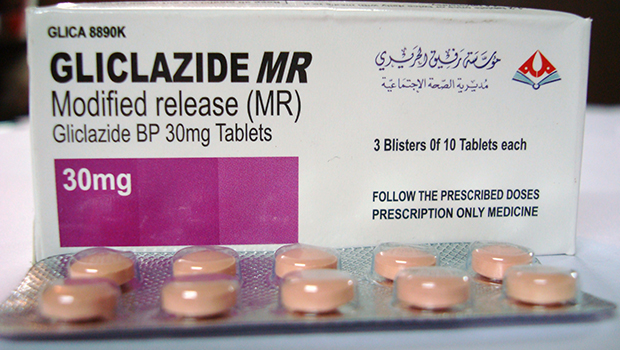Frustrated with Your A1c but Doctor Isn’t Changing Your Treatment?
Healthcare professionals are pressed for time and often have standard treatment methods; you need to push if a treatment change seems needed

Despite the tremendous number of educational books, programs, and coaching plus dozens and dozens of medications, a significant number of people with type 2 diabetes struggle to see improvements in their blood sugar levels.
Clinical Inertia
Referred to as “clinical inertia,” research authors Jennifer Okema, John Peng, and Manuel Quinones determined that it’s largely the reason many patients with type 2 diabetes “fail to achieve glycemic goals.”
The study defines “clinical inertia” as a delay in the intensification of the treatment program regardless of consistently high blood sugar levels.
In other words: your doctor isn’t adjusting or changing your treatment plan even though your blood sugar levels aren’t improving.
The major concern is that if a patient’s high blood sugars continue this increases their risk of developing diabetes-related complications with scary names like retinopathy, neuropathy, dermopathy, and nephropathy.
And quite simply, prolonged high blood sugars reduce a patient’s overall life expectancy.
Healthcare Team not Solely at Fault
Considering today’s healthcare system, it wouldn’t be fair to simply blame the healthcare team.
Instead, the authors point to a complicated mix of factors:
- The relationship between patient & healthcare provider
- The patient’s health insurance coverage
- The overall healthcare coverage system in the USA
- The overall healthcare system and logistics
- The overall financial burden a patient faces when trying to pay for medications, supplies, and appointments
Considering this heavy list of factors, a patient with type 2 diabetes could be left feeling pretty stuck.
For instance, many health insurance programs will only provide a limited number of diabetes education hours for a patient, and only during the first year or two after their diagnosis.
The problem with this is that many patients don’t begin diabetes medications during those first two years. Or, if they do start medications early, it can take a year or two to see what improvements a patient might see in their blood sugar as they also try to make adjustments in lifestyle factors.
But many patients are eager to improve their health.
Frustrated with your A1c?
In the doctor-patient relationship, it can be daunting to walk into your appointment and tell your doctor you disagree with their treatment plan.
But a 2016 patient survey from the American Association of Clinical Endocrinologists (AACE) confirmed that many patients with type 2 diabetes are eager and willing to improve their blood sugars but their healthcare team isn’t matching that same eager pace and readiness.
Metformin may not be the Answer
Too often, patients with type 2 diabetes are prescribed metformin — which is considered the “first line of defense” when it comes to diabetes medications, explains Okemah.
Metformin is the first pharmaceutical approach for patients with type 2 diabetes for a few reasons.
- It does not cause low blood sugars, which means there’s no concern of patients experience severe hypoglycemia.
- It works primarily by reducing the amount of glucose your liver releases into your bloodstream.
But there’s a problem with metformin that the medical world has yet to truly acknowledge: many patients experience severe digestive side-effects, namely diarrhea.
In fact, the side-effects of metformin are so uncomfortable that it actually has one of the “lowest patient adherence rates.” In other words, there’s a high rate of patients who stop taking their metformin.
Adding to the struggle to improve blood sugar levels, some patients may not tell their doctor they’ve stopped taking the medication in fear they will be seen as a failure or disappointment.
Open Discussion of Treatment Options is Key
If patients are able to have a more open discussion with their healthcare team about the side-effects, it might be possible to switch to the more expensive (and harder to get insurance coverage for) “extended-release” version would ease these side-effects. And many patients find the side-effects lessen remarkably after 3 to 4 weeks on the medications.
But this can only be learned if there is an open conversation between doctor and patient.
Ask about Other Options!
Many patients do not realize that they have other options.
There are a dozen other options for improving your blood sugars with prescription medication, and your healthcare team should work with you to find the one that works best for you.
Do a little of your own research and bring it with you to your next doctor’s appointment. (And schedule that appointment sooner than later.)
Whether or not the medication you researched is the right fit for your diabetes, your research will demonstrate your interest and eager effort to your healthcare team. It will open the discussion to other options.
Initiating this kind of conversation with your healthcare team can be daunting if it’s not natural to your personality. If it’s easier, start first with the nurse or assistant that begins the appointment with you and takes your vitals. Tell them you’d like to discuss X, Y, and Z with your doctor and lay your research down right there on the table so it cannot be skipped or ignored.
When it comes to managing and living with any type of diabetes, it’s pretty critical that you speak up and advocate for yourself. There is no “one-size-fits-all” diabetes treatment plan. If your healthcare team can’t hear you or understand that, it may be time to consider working with a different team!





